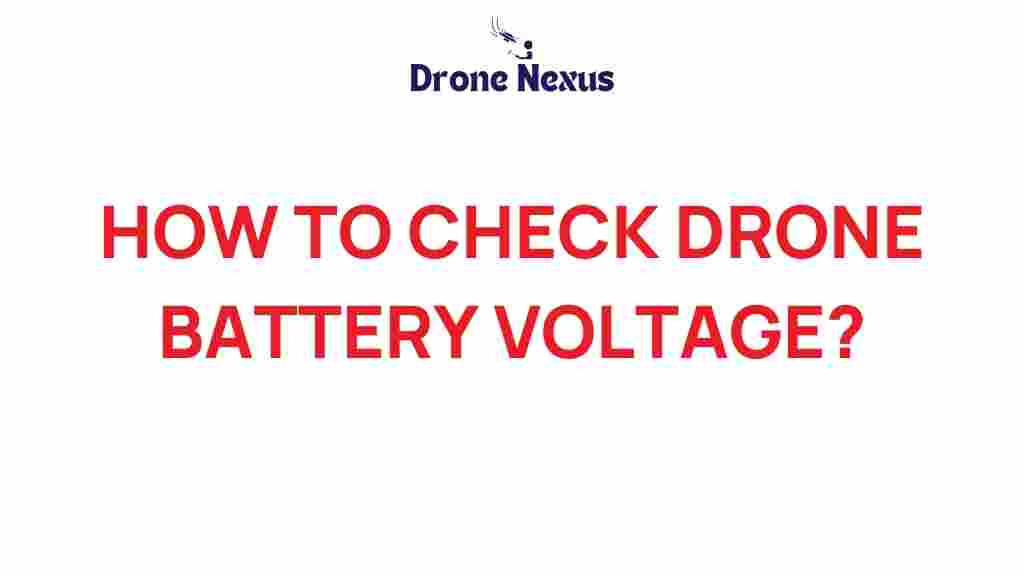Understanding Drone Battery Voltage
In the world of drones, battery performance is crucial for optimal functioning. One of the most important aspects to monitor is the drone battery voltage. Understanding how to check and manage your drone’s battery voltage can significantly enhance its performance and prolong its lifespan. In this article, we will guide you through the process of checking your drone’s battery voltage like a pro while also providing useful tips and troubleshooting advice.
Why Monitor Drone Battery Voltage?
Monitoring your drone’s battery voltage is essential for several reasons:
- Flight Safety: Low battery voltage can lead to sudden power loss, risking the safety of your drone.
- Performance Optimization: Knowing your battery voltage helps maintain optimal flight times and performance.
- Battery Longevity: Regular monitoring can prevent over-discharge and damage, extending your battery’s life.
How to Check Drone Battery Voltage
Now that we understand the importance of monitoring the drone battery voltage, let’s dive into the step-by-step process of checking it accurately.
Step 1: Gather Necessary Tools
Before you begin, ensure you have the following tools:
- Multimeter: A digital multimeter is the most reliable tool to measure battery voltage.
- Drone Battery: Ensure your drone’s battery is removed from the drone for safety.
- Safety Gear: Consider using gloves to handle the battery safely.
Step 2: Prepare Your Multimeter
Follow these steps to prepare your multimeter:
- Turn on the multimeter and set it to the DC voltage setting.
- Select a range that covers the expected voltage of your drone battery (typically between 0-20V).
Step 3: Measure the Voltage
Now, you’re ready to measure the battery voltage:
- Connect the red probe of the multimeter to the positive terminal of the battery.
- Connect the black probe to the negative terminal.
- Read the voltage displayed on the multimeter.
Make sure to note the voltage reading, as this will help you assess the battery’s health.
Step 4: Analyze the Results
Understanding the voltage readings is key:
- Fully Charged: A healthy LiPo battery should show around 4.2V per cell when fully charged.
- Normal Operating Range: For a 3-cell (3S) battery, a healthy voltage should be between 11.1V and 12.6V.
- Low Voltage: If the voltage drops below 3.3V per cell, it’s time to recharge or replace the battery.
Troubleshooting Drone Battery Voltage Issues
If you encounter issues with your drone battery voltage, consider the following troubleshooting tips:
Tip 1: Check the Connections
Ensure that all connections between the battery and drone are clean and secure. Corroded or loose connections can lead to inaccurate voltage readings.
Tip 2: Inspect the Battery
Look for signs of physical damage on the battery, such as swelling or punctures. These issues can affect the battery’s performance and safety.
Tip 3: Test with a Different Multimeter
If you suspect your multimeter may be faulty, test the battery with another multimeter to verify the voltage readings.
Tip 4: Monitor Battery Usage
Keep track of how many cycles your battery has gone through. Most LiPo batteries last for about 300-500 cycles, depending on usage.
Best Practices for Maintaining Drone Battery Voltage
To ensure the longevity and performance of your drone battery, follow these best practices:
- Regular Monitoring: Check the battery voltage before and after each flight.
- Proper Charging: Use a dedicated LiPo charger to ensure safe and effective charging.
- Storage Conditions: Store your batteries in a cool, dry place, ideally at around 3.8V per cell for long-term storage.
- Avoid Over-Discharge: Never let your battery voltage drop below 3.0V per cell to prevent damage.
Conclusion
Monitoring your drone battery voltage is crucial for ensuring safe and efficient operations. By following the steps outlined in this article, you can check your battery voltage like a pro and troubleshoot any issues that may arise. Remember that regular maintenance and proper handling can significantly extend the life of your drone batteries.
For more information on drone battery care, check out this helpful resource here.
Have questions or want to share your experiences with drone battery management? Feel free to leave a comment below!
This article is in the category Applications and created by DroneNexus Team
